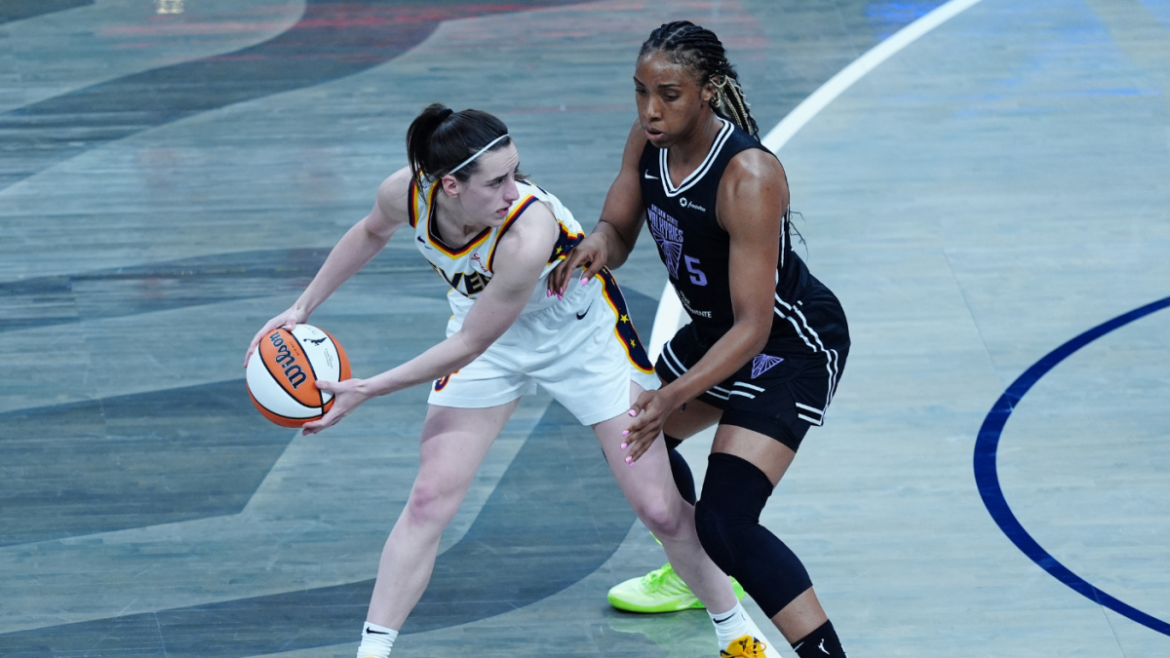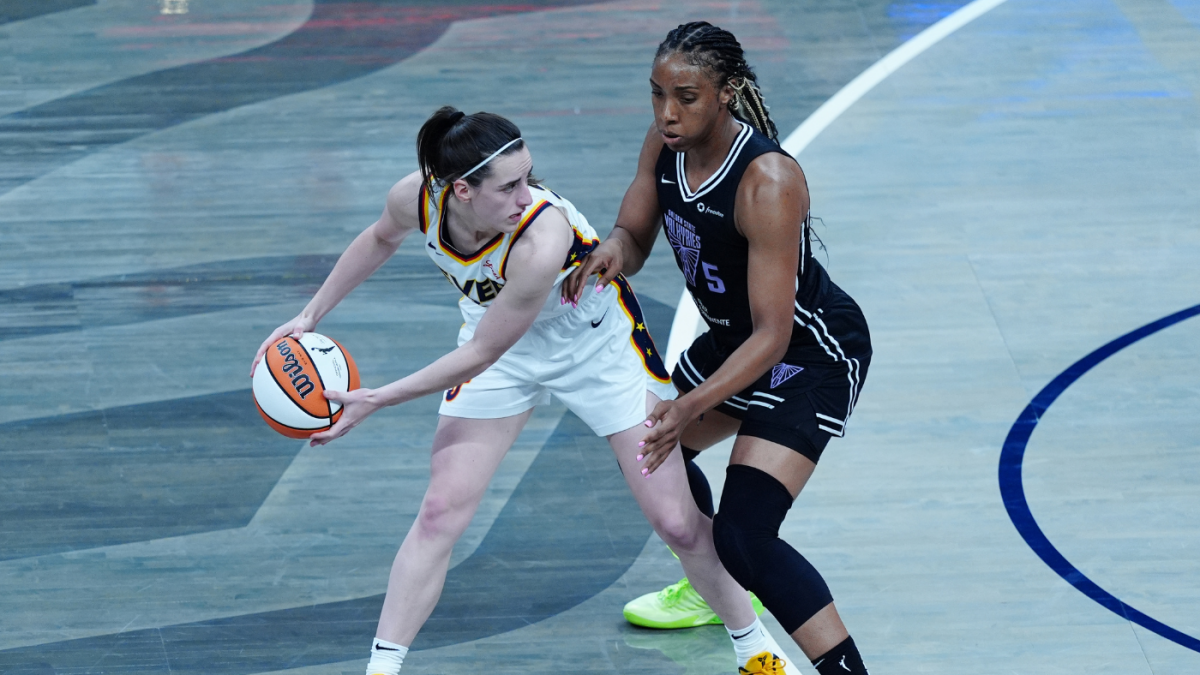The world of women’s basketball witnessed a pivotal moment as Caitlin Clark, the electrifying star of the Indiana Fever, faced off against the Golden State Valkyries. Her return from injury was highly anticipated, but the outcome was far from what many expected. Instead of a triumphant comeback, the game became a masterclass in defensive strategy by the Valkyries, showcasing how a cohesive team can neutralize even the most brilliant individual talent. This matchup highlighted the Valkyries’ dominance and provided a blueprint for containing Clark’s explosive offensive capabilities.
The Clark Conundrum: A Star Dimmed
Caitlin Clark’s impact on women’s basketball is undeniable. Her range, court vision, and competitive fire have captivated audiences and injected new energy into the WNBA. However, even the brightest stars can face challenges, and the Valkyries presented Clark with a particularly daunting one. In her return game, Clark struggled, finishing with just 10 points on 4-of-12 shooting. This wasn’t an isolated incident. Earlier in the season, the Valkyries held her to a season-low 11 points, stifling her offensive rhythm and forcing turnovers. The numbers paint a clear picture: the Valkyries have found a way to disrupt Clark’s game, preventing her from reaching her full potential. Adding insult to injury, the Fever’s offense sputtered, failing to find consistent scoring outside of their star player, leading to their second-lowest point total of the season.
The Valkyries’ success against Clark isn’t simply a matter of luck or individual matchups. It’s the result of a meticulously crafted defensive strategy, executed with precision and unwavering commitment. Several key elements contribute to their effectiveness:
Physicality as a Disruptor
The Valkyries’ coaching staff, led by Natalie Nakase, identified a critical weakness in Clark’s game: a vulnerability to physicality. They implemented a strategy of constant pressure, forcing Clark to fight for every inch of space. Defenders like Veronica Burton hounded Clark, disrupting her passing lanes and making it difficult for her to get clean looks at the basket. This physicality extended beyond simple guarding; it involved aggressive screens, bumping Clark off her intended paths, and generally making her uncomfortable. The Valkyries’ physical approach was a significant factor in their ability to contain Clark, as it forced her to adjust her game plan and often led to turnovers.
Denying the Three-Point Line
Clark’s range extends well beyond the three-point arc, making her a constant threat from deep. The Valkyries prioritized denying her open looks from beyond the arc, forcing her to drive into the paint where their help defense could converge. By limiting her three-point attempts, they effectively neutralized one of her most potent weapons. In the described game, she went 0 for 7 from beyond the arc, underscoring the effectiveness of this strategy. The Valkyries’ ability to close out on shooters and contest Clark’s attempts from long range was a key factor in their defensive success.
Help Defense and Rotations
The Valkyries didn’t rely solely on individual defenders to contain Clark. They employed a sophisticated system of help defense and rotations, ensuring that Clark was constantly facing multiple defenders. When she drove to the basket, help defenders would collapse on her, forcing her to pass or attempt contested shots. This team-oriented approach minimized her scoring opportunities and forced turnovers. The Valkyries’ defensive rotations were seamless, with players communicating effectively and providing support to their teammates. This collective effort was crucial in their ability to contain Clark and disrupt the Fever’s offense.
Kate Martin’s Impact
Kate Martin, a key expansion draft pick for the Valkyries, has been a significant factor in their success against the Fever. Her familiarity with Clark, stemming from their college rivalry, provides her with a unique understanding of Clark’s tendencies and weaknesses. Martin’s defensive prowess and basketball IQ allow her to anticipate Clark’s moves and disrupt her offensive flow. Martin’s ability to read Clark’s intentions and react accordingly was a major asset for the Valkyries, as she often served as the primary defender on Clark.
Burton’s Tenacity
Veronica Burton’s performance cannot be overstated. She not only disrupted Clark on defense but also contributed significantly on offense with 21 points. Her ability to impact both ends of the court makes her a vital component of the Valkyries’ success. Burton’s tenacity and versatility were evident throughout the game, as she played a crucial role in the Valkyries’ defensive scheme and provided a scoring punch on the offensive end. Her all-around performance was a testament to her value as a player and her importance to the Valkyries’ success.
Beyond Clark: The Fever’s Offensive Woes
While the Valkyries’ defensive focus on Clark was undoubtedly a key factor in their victory, it’s important to acknowledge the Indiana Fever’s broader offensive struggles. The Fever’s offense often becomes overly reliant on Clark’s individual brilliance, lacking consistent scoring options when she is contained. Aliyah Boston, another key player for the Fever, was also effectively neutralized by the Valkyries’ defense. The Fever’s coaching staff needs to develop more diverse offensive strategies that don’t solely depend on Clark’s scoring. This includes creating opportunities for other players to score, improving their ball movement, and establishing a more consistent inside presence. Until the Fever can diversify their offense, they will continue to struggle against teams that can effectively contain Clark.
The Fever’s reliance on Clark’s scoring is a double-edged sword. While her talent is undeniable, it also makes the team vulnerable to defensive schemes that focus on containing her. The Fever need to develop a more balanced offense, with multiple scoring threats and improved ball movement. This will not only make them a more formidable opponent but also take some of the pressure off Clark, allowing her to be more effective when she does get the ball. The Fever’s offensive struggles against the Valkyries highlight the need for a more comprehensive approach to their offense.
The Valkyries’ Message: Teamwork Triumphs
The Valkyries’ victories over the Fever send a clear message to the rest of the WNBA: teamwork and strategic execution can overcome individual star power. They have demonstrated that by focusing on a cohesive defensive approach, they can neutralize even the most dynamic offensive players. The Valkyries’ success is a testament to their coaching staff’s ability to develop and implement a sound game plan, and to the players’ willingness to embrace a team-first mentality. Their chemistry and collective effort are evident on the court, making them a formidable opponent for any team in the league. This serves as a potent reminder in a league increasingly driven by individual stars, that the fundamentals of team play remain crucial for success.
The Valkyries’ team-first approach is evident in their defensive strategy, which relies on communication, trust, and collective effort. Each player understands their role and executes it with precision, allowing the team to function as a well-oiled machine. This level of cohesion is rare in professional sports and is a significant factor in the Valkyries’ success. The Valkyries’ ability to work together as a unit is a testament to their coaching staff’s leadership and the players’ commitment to the team’s goals.
A Shift in the Landscape? The Long-Term Implications
The Valkyries’ emergence as a defensive force has the potential to reshape the WNBA landscape. Their success against Caitlin Clark forces other teams to re-evaluate their defensive strategies and consider how they can implement similar tactics. Furthermore, the Valkyries’ focus on physicality and aggressive defense could lead to a broader shift in the league’s style of play. Teams may begin to prioritize defensive toughness and disruptiveness, seeking to emulate the Valkyries’ success. The Valkyries’ impact on the league extends beyond their victories, as they have set a new standard for defensive excellence and teamwork.
The Valkyries’ success could also have implications for the way teams approach the draft and player development. Teams may begin to prioritize defensive skills and versatility in their draft picks, as these attributes are crucial for implementing the Valkyries’ defensive scheme. Additionally, the Valkyries’ success could inspire other teams to invest more resources in developing their defensive systems and coaching staffs. The Valkyries’ impact on the league is far-reaching and could lead to a more competitive and exciting product on the court.
The Valkyries’ dominant performance against Caitlin Clark and the Indiana Fever was more than just a single victory; it was a statement of intent. It was a demonstration that strategic defense, unwavering physicality, and a team-first mentality can neutralize even the most electrifying offensive talent. The Valkyries have presented a blueprint for containing Clark, one that other teams will undoubtedly study and attempt to replicate. But beyond the specifics of defending Clark, the Valkyries have also offered a broader lesson: in the women’s basketball, as in any team sport, the collective is often greater than the sum of its individual parts. Their rise signals a potential paradigm shift, where sophisticated defensive strategies and team cohesion gain greater prominence in the pursuit of championship glory. The Valkyries aren’t just winning games; they’re redefining the game itself.





